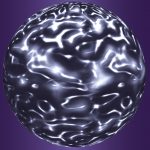Link to Pubmed [PMID] – 28121213
Autophagy 2017 Mar;13(3):629-630
Macroautophagy delivers cytoplasmic material to lysosomal/vacuolar compartments for degradation. Conserved multisubunit complexes, composed of autophagy-related (Atg) proteins, initiate the formation of membrane precursors, termed phagophores. Under physiological conditions these cup-shaped structures can capture cytoplasmic material highly selectively. Starvation or cytotoxic stresses, however, initiate the formation of much larger phagophores to enclose cytoplasm nonselectively. The biogenesis of nonselective autophagosomes is initiated by the hierarchical assembly of the Atg1 kinase complex and the recruitment of Atg9 vesicles at the phagophore assembly site (PAS). In this punctum we summarize our recent findings regarding tethering of Atg9 vesicles by the Atg1 kinase complex. We discuss membrane tethering by and activation of its central subunit Atg17 in the context of other canonical membrane tethering factors. Our results show that Atg17 suffices to bind and tether Atg9 vesicles. The Atg31-Atg29 subcomplex inhibits Atg17 activity, and activation of Atg17 depends on the formation of the Atg1 kinase complex that involves recruiting Atg1-Atg13. Our studies lead to a model of unconventional membrane tethering in autophagy.

